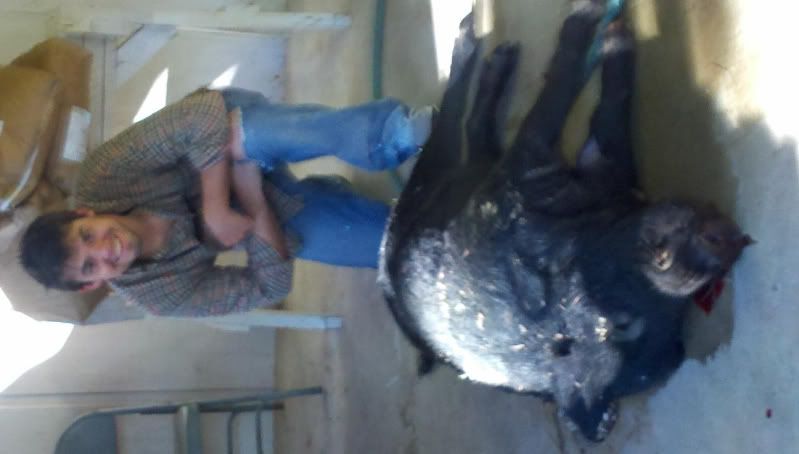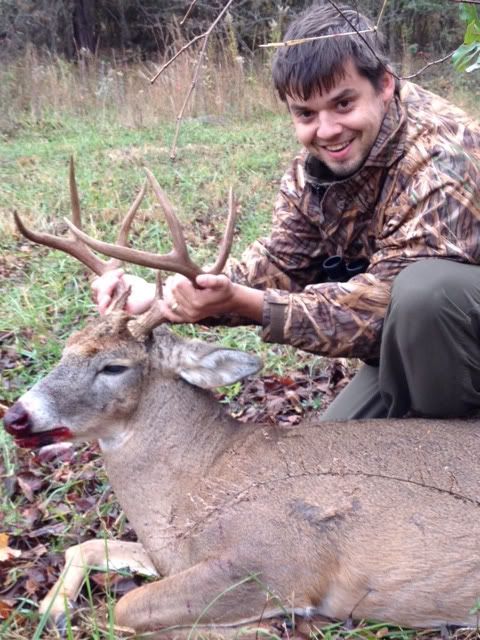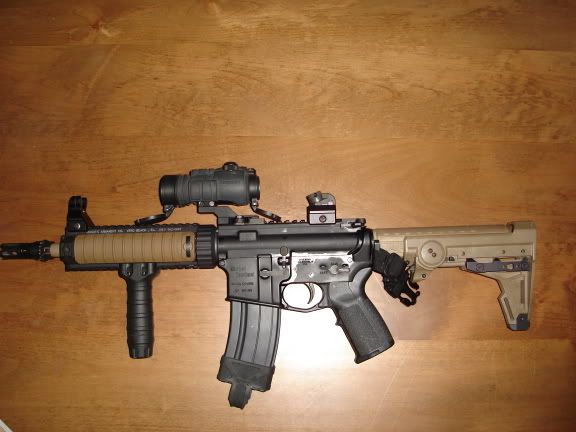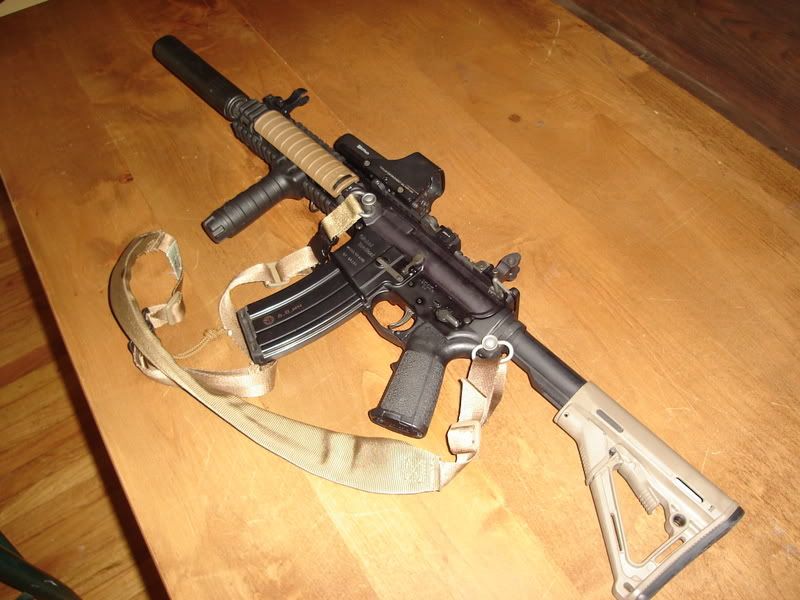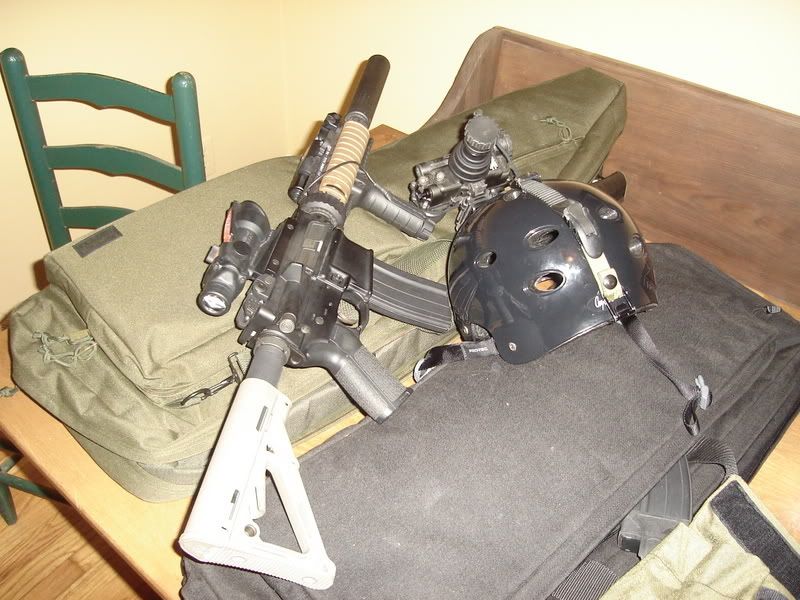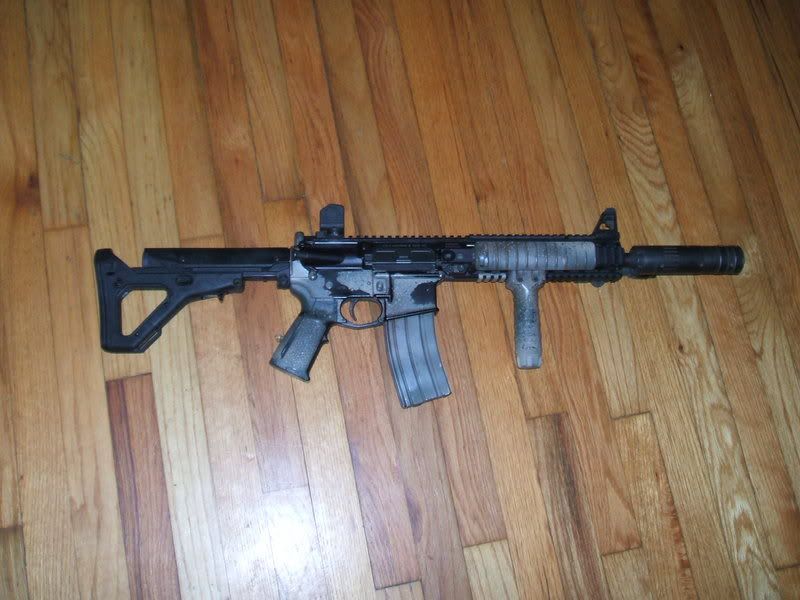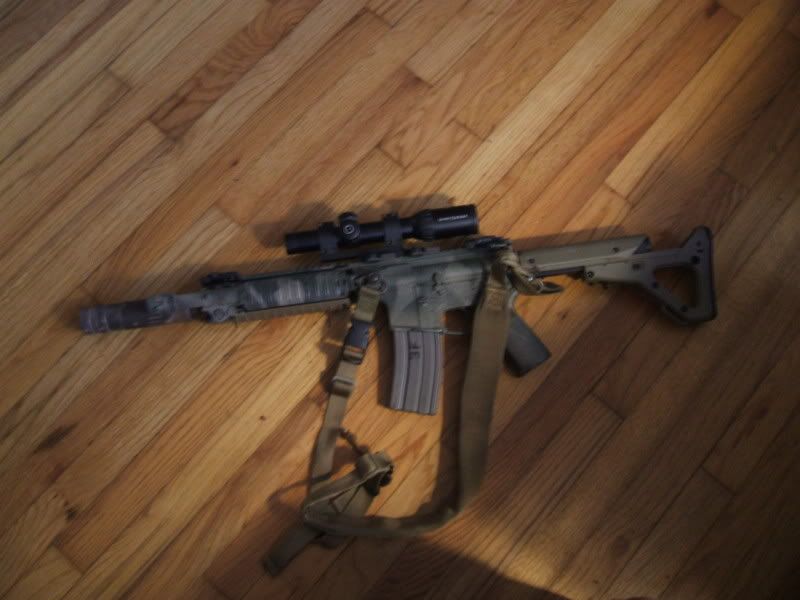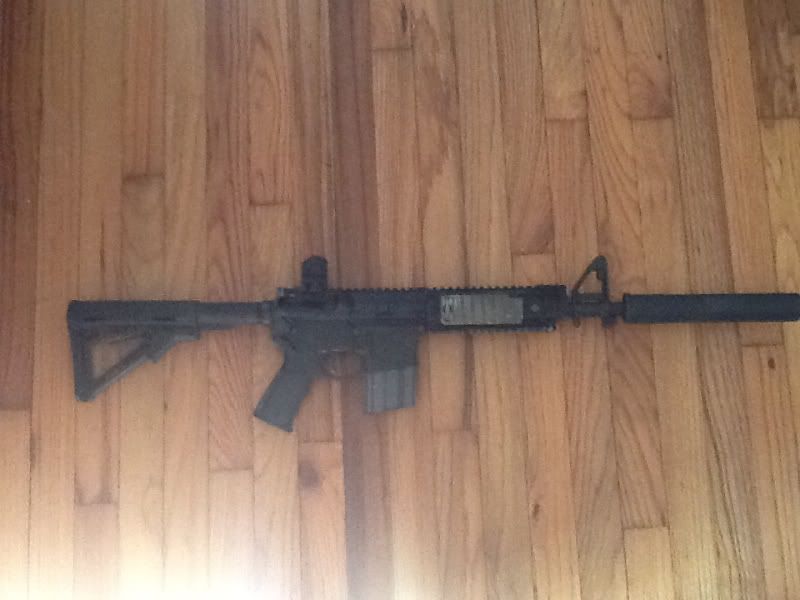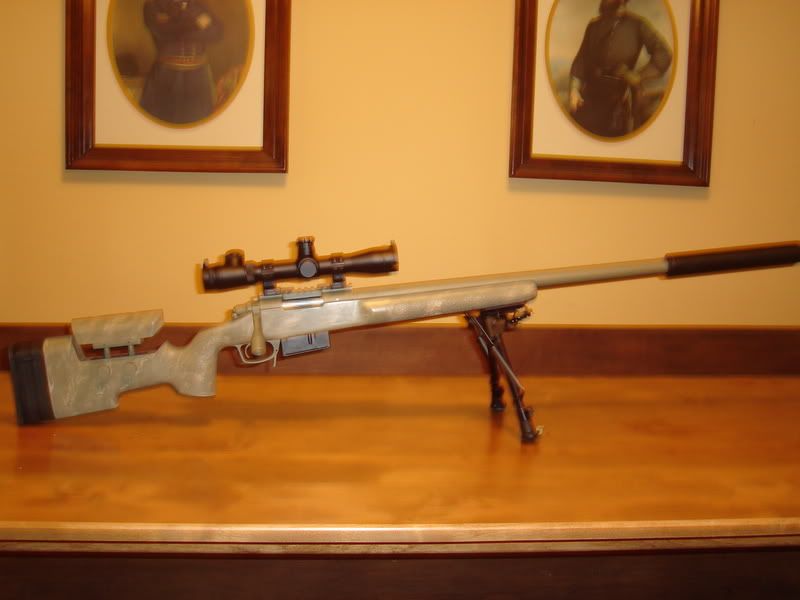I thought that I would share what I have learned about what works for me and what doesn't when it comes to precision rifle systems.
My first rifle was a snipers hide build by what was at the time Patriot Arms. I knew nothing about what I wanted, or how its features worked, and just asked for what I saw everyone recommend.
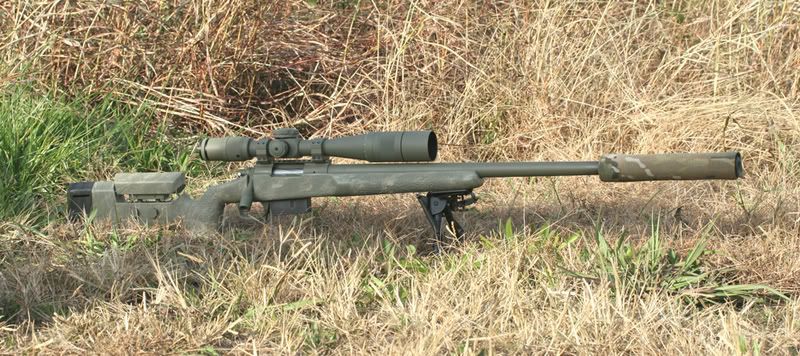
It featured:
McMillan A5 with a McMillan thumbscrew cheekpiece and a 'sniper' fill
22" Broughton .308 5c barrel with 1-10 twist in a #7 profile firing the 175 SMK at 2700 FPS
Surgeon 591
Seeking rings
USO SN-3 3-17 ergo with MOA reticle and adjustments and illumination
AAC 762-SD
Harris swivel bipod
Jewel trigger
It was exceptionally accurate (.25MOA) and a great learning tool. I took it out to South Dakota and ran 2,000 rounds through it in a week of prairie dog hunting.
In that week I learned that I did not care for the buttstock of the A5, as I had trouble getting it to ride bags the way that I wanted. I also disliked the cheekpiece adjustment as it was hard to put it back in the exact location every time and would work loose after a bit of shooting.
The scope worked fine, but I did not like having to break my cheek weld to adjust the objective parallax.
The silencer was the biggest frustration as it was an older (pre-circumference welded) 18 tooth design. It would loosen after each shot or two and the accuracy when loose was around 5moa with a 12moa shift.
After shooting the rifle for a total of 5,000 rounds, I decided to send it off to GAP to have it fitted with a Manners T2a, and to have the barrel retreaded to accept a Surefire 762k mount. I also got a Schmidt Bender USMC scope at the same time.

The stock was great, it rode the bags exactly as I wanted, the cheekpiece was a work of art, returned to zero every time and stayed there. It also was a little lighter.
The scope was also a welcomed improvement. It weighed substantially less, had better ergonomics, and I grew to like the Mil system better as it allowed me more features to use with a mildot master for tac competitions where we ranged with the reticle.
The silencer was a large disappointment. I fired less than 5 rounds through it and determined that the sound reduction was just not good enough as it rang my ears on a 22 inch barrel. I had my 762-SD refurbished to 2007 spec and ran it.
I used this setup for another 2-3,000 rounds before I felt the need to get a new barrel. With the hard firing schedules I put it through I felt like 8,000 rounds was a lot for the barrel to take.
During this time I also found that I wanted to have a bit more magnification and I did not care for the MTC knobs of the scope, so I went to a 4-16x42 Schmidt and Bender. I liked the single turn knob and the P4 reticle much better than the USMC scope, however the tunneling of the Schmidt line at low power had me wanting a better low end FOV.
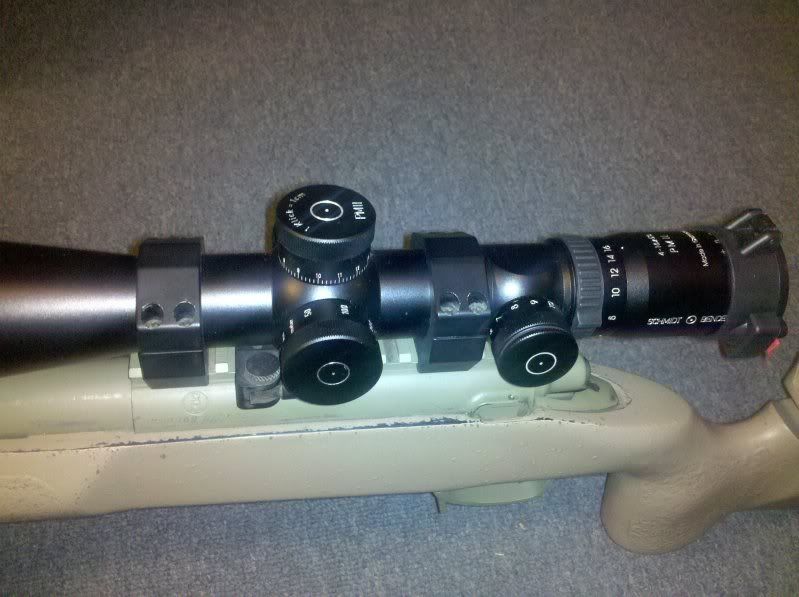
I eventually ditched the Schmidt and went with the new F1. The new F1 MLR reticle had basically the same features as the P4, but also had no tunneling and was a bit lighter than the Schmidt as I had become more weight conscious with my rifle accessories.

Since I had been shooting more competitions and hunting with the rifle, I became acutely aware that I had set the rifle up to be the perfect prone static position rifle, but that was not how I was using it. It was a beast to shoot in other positions and offhand.
Most of the issues I had were with the weight of the barrel. I learned that while the weight itself when carrying the rifle was not all that bad, when deploying it in offhand or awkward positions it would be unbearable and a hindrance.
Also, the stock for-end, while great for riding bags, was just too big for sling shooting (I have smaller hands).
Since I knew that the stock and barrel would be replaced, I started to examine all of my accessories. The goal of the new rifle would be to do a little bit of everything well, but that meant compromise on some of the things that it did excellent.
Since the largest problem I had was the balance and weight of the system I first began to look at the barrel forward.
I determined that a much shorter barrel would be necessary and decided on 18" as the length. Since I still hunted with it I wanted to retain more energy at range, so I looked into other calibers. I decided that the 7-08 firing the 162 AMAX would be about perfect if I could get it above 2600fps. To further save weight I decided to go with a Remington Varmint contour barrel and to DEEPLY spiral flute the barrel to save even more weight.
I would have gone smaller in contour, but I also decided that I would move away from QD silencers and go with a thread on unit, so I needed the shoulder size to be large. One thing that most people don't consider when selecting silencers is the weight of the mount itself. I selected the Cyclone-k silencer due to it being steel and a simple and accurate thread on mount that would eliminate any issues with a mount. Since it only weighs 3oz. more than a typical titanium silencer, I went with it for durability on the short barrel.
For the stock I chose the A1-3 for the forend that would ride bags and sling shoot well and for the higher comb and more traditional grip. I went with standard fill as I wanted a little more weight in the rear to create better balance, an edge stock would save more weight but make the balance worse.
I replaced to Badger DBM with a Surgeon unit because I liked the mag fence for leaning into a barricade instead of applying pressure to the magazine itself.
The biggest change for me was the move to a 2.5-10x32 mil/mil NXS. I made the move purely to save weight. The lack of a FFP reticle has not been much of an issue so far, but I have to constantly remember not to use the reticle for hold offs on low power, this almost resulted in a gutshot deer this season that was moving across a field at a trot. The lack of parallax adjustment had me concerned at first, but the eye box is so small that your head has to be exactly right to get a full FOV, so I have found that I stay pretty consistent at range despite to fixed parallax. I would say my biggest complaint with the scope is its light gathering ability, which is pretty poor compared to my previous scopes.
I decided to give the build to RW Snyder as he had a good reputation and was willing to do the work in a short time frame. He did not disappoint. I was able to get the AMAX to 2700fps which blew away my load for my .308 which pushed the 175SMK at the same speed. All in all I think that I am finally at the point with the system that I do not want to change anything about it. While it won't out group a full blown f-class rig, it will do everything that I need it to do exceptionally well, from target shooting in the prone, to hunting, to competitions, I finally have my one 'do-it-all' rifle. The only thing that has not changed is the trigger and action, LOL.
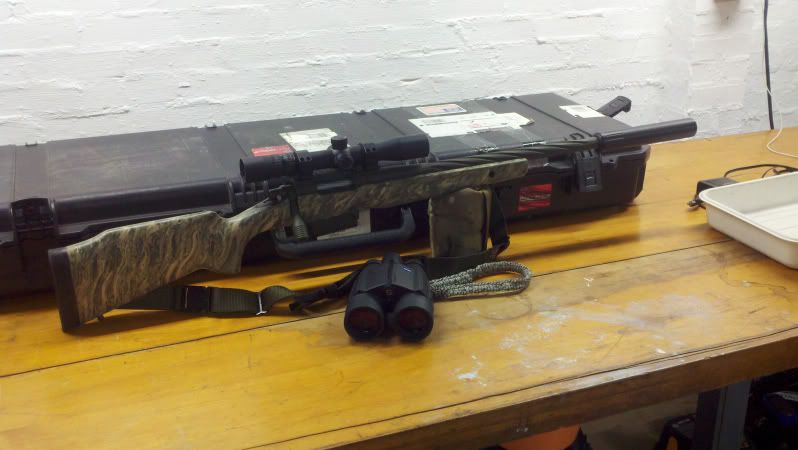
ETA: I also need to mention two important things that I left out:
1. I no longer use a bipod, I use the small bag pictured above as it weighs less and can be carried on a belt. If I have time to shoot in the prone it takes the same amount of time to take the bag off my belt as it does to deploy the bipod legs. This makes a huge difference in the weight and balance department, while making the rifle more streamlined.
2. Target ID is no longer done with the rifle scope and is accomplished with the Zeiss LRF binos. This leads to quicker ID because of the higher resolution, larger field of view, and lighter weight of the observation tool not being connected to a rifle. It also has the bonus of not having to point a loaded rifle at everything I want to look at.
My first rifle was a snipers hide build by what was at the time Patriot Arms. I knew nothing about what I wanted, or how its features worked, and just asked for what I saw everyone recommend.

It featured:
McMillan A5 with a McMillan thumbscrew cheekpiece and a 'sniper' fill
22" Broughton .308 5c barrel with 1-10 twist in a #7 profile firing the 175 SMK at 2700 FPS
Surgeon 591
Seeking rings
USO SN-3 3-17 ergo with MOA reticle and adjustments and illumination
AAC 762-SD
Harris swivel bipod
Jewel trigger
It was exceptionally accurate (.25MOA) and a great learning tool. I took it out to South Dakota and ran 2,000 rounds through it in a week of prairie dog hunting.
In that week I learned that I did not care for the buttstock of the A5, as I had trouble getting it to ride bags the way that I wanted. I also disliked the cheekpiece adjustment as it was hard to put it back in the exact location every time and would work loose after a bit of shooting.
The scope worked fine, but I did not like having to break my cheek weld to adjust the objective parallax.
The silencer was the biggest frustration as it was an older (pre-circumference welded) 18 tooth design. It would loosen after each shot or two and the accuracy when loose was around 5moa with a 12moa shift.
After shooting the rifle for a total of 5,000 rounds, I decided to send it off to GAP to have it fitted with a Manners T2a, and to have the barrel retreaded to accept a Surefire 762k mount. I also got a Schmidt Bender USMC scope at the same time.

The stock was great, it rode the bags exactly as I wanted, the cheekpiece was a work of art, returned to zero every time and stayed there. It also was a little lighter.
The scope was also a welcomed improvement. It weighed substantially less, had better ergonomics, and I grew to like the Mil system better as it allowed me more features to use with a mildot master for tac competitions where we ranged with the reticle.
The silencer was a large disappointment. I fired less than 5 rounds through it and determined that the sound reduction was just not good enough as it rang my ears on a 22 inch barrel. I had my 762-SD refurbished to 2007 spec and ran it.
I used this setup for another 2-3,000 rounds before I felt the need to get a new barrel. With the hard firing schedules I put it through I felt like 8,000 rounds was a lot for the barrel to take.
During this time I also found that I wanted to have a bit more magnification and I did not care for the MTC knobs of the scope, so I went to a 4-16x42 Schmidt and Bender. I liked the single turn knob and the P4 reticle much better than the USMC scope, however the tunneling of the Schmidt line at low power had me wanting a better low end FOV.

I eventually ditched the Schmidt and went with the new F1. The new F1 MLR reticle had basically the same features as the P4, but also had no tunneling and was a bit lighter than the Schmidt as I had become more weight conscious with my rifle accessories.

Since I had been shooting more competitions and hunting with the rifle, I became acutely aware that I had set the rifle up to be the perfect prone static position rifle, but that was not how I was using it. It was a beast to shoot in other positions and offhand.
Most of the issues I had were with the weight of the barrel. I learned that while the weight itself when carrying the rifle was not all that bad, when deploying it in offhand or awkward positions it would be unbearable and a hindrance.
Also, the stock for-end, while great for riding bags, was just too big for sling shooting (I have smaller hands).
Since I knew that the stock and barrel would be replaced, I started to examine all of my accessories. The goal of the new rifle would be to do a little bit of everything well, but that meant compromise on some of the things that it did excellent.
Since the largest problem I had was the balance and weight of the system I first began to look at the barrel forward.
I determined that a much shorter barrel would be necessary and decided on 18" as the length. Since I still hunted with it I wanted to retain more energy at range, so I looked into other calibers. I decided that the 7-08 firing the 162 AMAX would be about perfect if I could get it above 2600fps. To further save weight I decided to go with a Remington Varmint contour barrel and to DEEPLY spiral flute the barrel to save even more weight.
I would have gone smaller in contour, but I also decided that I would move away from QD silencers and go with a thread on unit, so I needed the shoulder size to be large. One thing that most people don't consider when selecting silencers is the weight of the mount itself. I selected the Cyclone-k silencer due to it being steel and a simple and accurate thread on mount that would eliminate any issues with a mount. Since it only weighs 3oz. more than a typical titanium silencer, I went with it for durability on the short barrel.
For the stock I chose the A1-3 for the forend that would ride bags and sling shoot well and for the higher comb and more traditional grip. I went with standard fill as I wanted a little more weight in the rear to create better balance, an edge stock would save more weight but make the balance worse.
I replaced to Badger DBM with a Surgeon unit because I liked the mag fence for leaning into a barricade instead of applying pressure to the magazine itself.
The biggest change for me was the move to a 2.5-10x32 mil/mil NXS. I made the move purely to save weight. The lack of a FFP reticle has not been much of an issue so far, but I have to constantly remember not to use the reticle for hold offs on low power, this almost resulted in a gutshot deer this season that was moving across a field at a trot. The lack of parallax adjustment had me concerned at first, but the eye box is so small that your head has to be exactly right to get a full FOV, so I have found that I stay pretty consistent at range despite to fixed parallax. I would say my biggest complaint with the scope is its light gathering ability, which is pretty poor compared to my previous scopes.
I decided to give the build to RW Snyder as he had a good reputation and was willing to do the work in a short time frame. He did not disappoint. I was able to get the AMAX to 2700fps which blew away my load for my .308 which pushed the 175SMK at the same speed. All in all I think that I am finally at the point with the system that I do not want to change anything about it. While it won't out group a full blown f-class rig, it will do everything that I need it to do exceptionally well, from target shooting in the prone, to hunting, to competitions, I finally have my one 'do-it-all' rifle. The only thing that has not changed is the trigger and action, LOL.

ETA: I also need to mention two important things that I left out:
1. I no longer use a bipod, I use the small bag pictured above as it weighs less and can be carried on a belt. If I have time to shoot in the prone it takes the same amount of time to take the bag off my belt as it does to deploy the bipod legs. This makes a huge difference in the weight and balance department, while making the rifle more streamlined.
2. Target ID is no longer done with the rifle scope and is accomplished with the Zeiss LRF binos. This leads to quicker ID because of the higher resolution, larger field of view, and lighter weight of the observation tool not being connected to a rifle. It also has the bonus of not having to point a loaded rifle at everything I want to look at.



